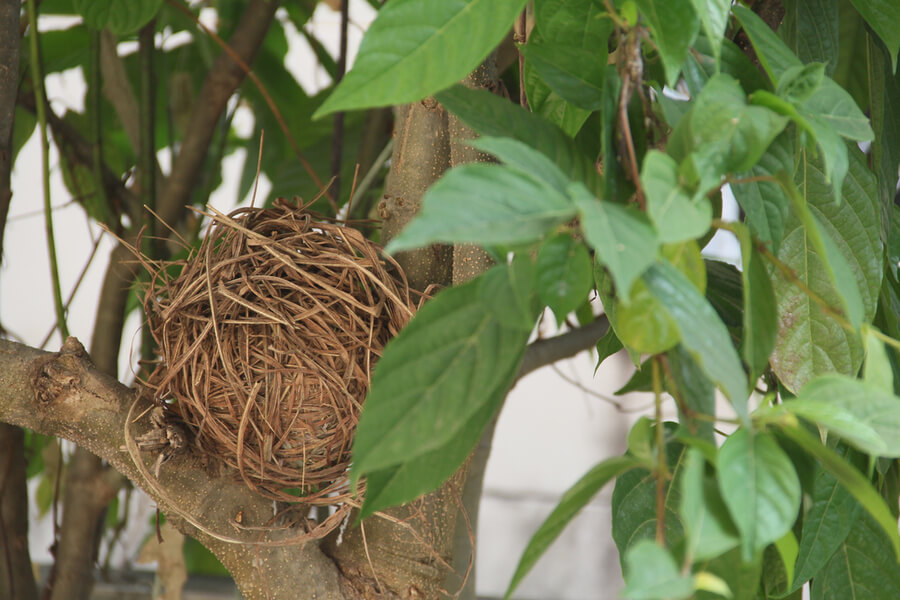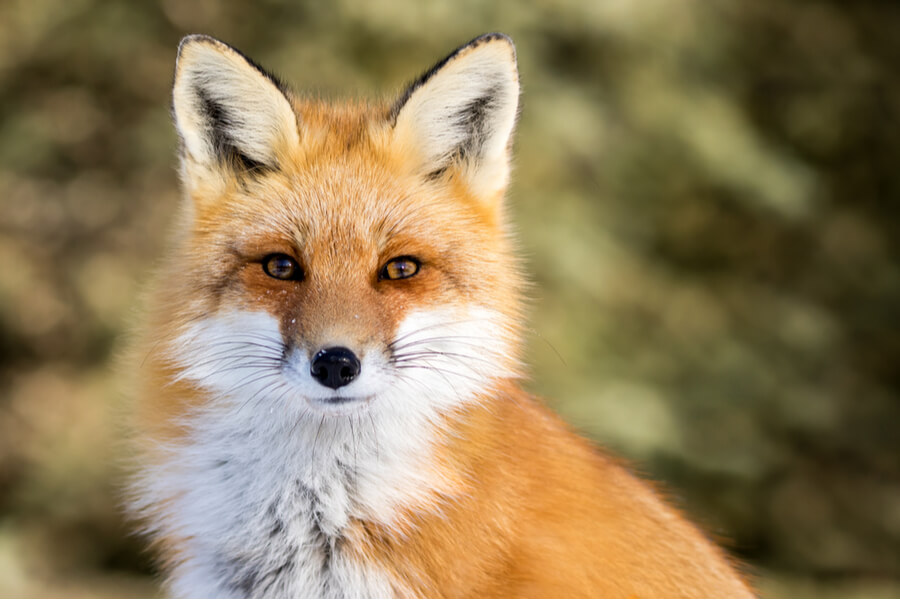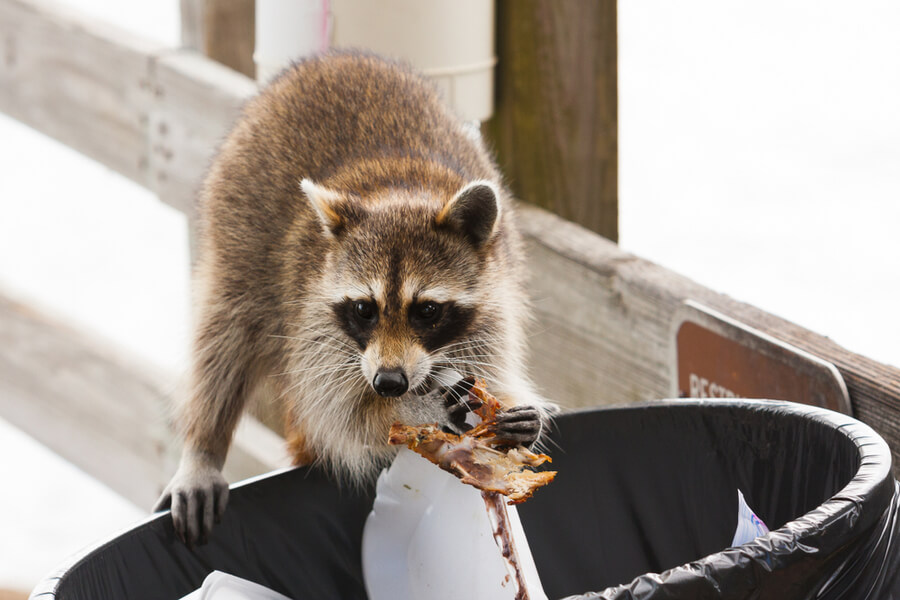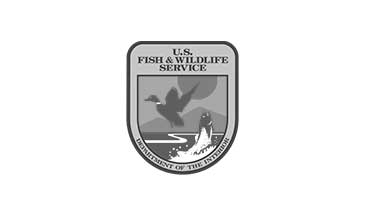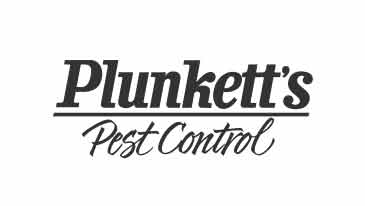Bird-based Damage
 Birds aren’t picky when it comes to nest-building material. When it comes time to roost, mother birds start aggressively gathering whatever they can string together. Beakfuls of grass, twigs, roots, threads off of rugs, curtains, or furniture, window screens--it’s all fair game. Birds tend to hide their actual nests well, but they don’t bother to hide where they get the material. If you notice an uptick in strange, minor wear-and-tear around lawn, mother birds might be building nests nearby.
Keep an especially close eye on prime nest-building material, like screen doors, tall grass, and dying bushes. If you notice a slow accumulation of damage over time, it’s possible that a bird is collecting nesting materials. We don’t recommend you attempt to remove or destroy a bird’s nest on your property, even if it’s incomplete. Instead, call the pros. We’ll be able to safely relocate the nest without harming the bird or her young.
Birds aren’t picky when it comes to nest-building material. When it comes time to roost, mother birds start aggressively gathering whatever they can string together. Beakfuls of grass, twigs, roots, threads off of rugs, curtains, or furniture, window screens--it’s all fair game. Birds tend to hide their actual nests well, but they don’t bother to hide where they get the material. If you notice an uptick in strange, minor wear-and-tear around lawn, mother birds might be building nests nearby.
Keep an especially close eye on prime nest-building material, like screen doors, tall grass, and dying bushes. If you notice a slow accumulation of damage over time, it’s possible that a bird is collecting nesting materials. We don’t recommend you attempt to remove or destroy a bird’s nest on your property, even if it’s incomplete. Instead, call the pros. We’ll be able to safely relocate the nest without harming the bird or her young.
Debris Piles
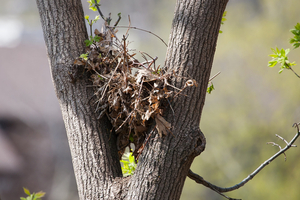 Most animals construct their nests the same way birds do: by gathering up whatever they can. The big difference is, animals like rodents can’t access all the resources birds can. Animals like chipmunks, mice, and rats use ground debris for their nests, while squirrels can climb to gather materials. Common nest-building material includes leaves, paper, garbage, twigs, weeds, topsoil, bark, and grass. Ground mammals will use anything they can carry or drag if it’ll help insulate or conceal their nest.
Animals generally build nests either to survive winter or rear their young. Both of these goals leave them vulnerable, so they have to build somewhere hidden or inaccessible. Squirrels build nests called “dreys” high up in trees. Dreys incorporate the architecture of the host tree and are usually made of leaves. Terrestrial mammals hide their nests by building them in nooks and crannies. Look for debris piles under decks, porches, in corners, or under rocks and bushes.
Most animals construct their nests the same way birds do: by gathering up whatever they can. The big difference is, animals like rodents can’t access all the resources birds can. Animals like chipmunks, mice, and rats use ground debris for their nests, while squirrels can climb to gather materials. Common nest-building material includes leaves, paper, garbage, twigs, weeds, topsoil, bark, and grass. Ground mammals will use anything they can carry or drag if it’ll help insulate or conceal their nest.
Animals generally build nests either to survive winter or rear their young. Both of these goals leave them vulnerable, so they have to build somewhere hidden or inaccessible. Squirrels build nests called “dreys” high up in trees. Dreys incorporate the architecture of the host tree and are usually made of leaves. Terrestrial mammals hide their nests by building them in nooks and crannies. Look for debris piles under decks, porches, in corners, or under rocks and bushes.
Disturbed Soil
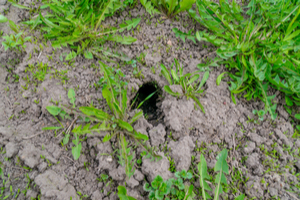 A lot of the bigger animals that build nests near homes--skunks, shrews, groundhogs--dig out burrows instead of collecting materials. Skunks usually dig down around existing structures like porches, decks, or sheds. Many a homeowner has encountered a nasty surprise waiting for them under their deck during winter. Shrews, groundhogs, and moles are less discerning about their burrow’s location, though they’ll take advantage of surrounding infrastructure, too.
In order to burrow, animals need to dig. As they dig deeper, they’ll move soil out of their way, often expelling it back to the surface. Look for signs of digging around your home, particularly around structures that contact the ground. Burrowing animals love to build near foundations, siding, and fence lines for the additional cover these provide. If you find a burrow, do not attempt to flush the animal out of the hole yourself. Cornering a wild animal without proper training, care, and equipment is never a good idea.
A lot of the bigger animals that build nests near homes--skunks, shrews, groundhogs--dig out burrows instead of collecting materials. Skunks usually dig down around existing structures like porches, decks, or sheds. Many a homeowner has encountered a nasty surprise waiting for them under their deck during winter. Shrews, groundhogs, and moles are less discerning about their burrow’s location, though they’ll take advantage of surrounding infrastructure, too.
In order to burrow, animals need to dig. As they dig deeper, they’ll move soil out of their way, often expelling it back to the surface. Look for signs of digging around your home, particularly around structures that contact the ground. Burrowing animals love to build near foundations, siding, and fence lines for the additional cover these provide. If you find a burrow, do not attempt to flush the animal out of the hole yourself. Cornering a wild animal without proper training, care, and equipment is never a good idea.
Waste
 Probably the most painfully obvious sign of all: wild animals produce waste. ...A lot of it. Along with excrement, animals shed fur, lose teeth, leave behind food remains, and make a mess wherever they go. Rabbits leave behind their telltale pellet-shaped droppings. Rats produce countless dry, rice-shaped droppings. Squirrels move topsoil to hide their food stashes and produce a small, dark droppings.
Larger animals produce larger waste (obviously), and may also leave behind other signs of habitation. Look for depressed grass, moved soil, and shed fur. Do not attempt to handle animal waste yourself. You could just as easily contract a disease from wild animal remains as you could from the animal yourself. Shed fur and skin may often be infested with ticks or fleas that you don’t want, either. If you can, try tracking animal waste toward a source. See if it originated closer to your home or further.
There’s a considerable difference between animals occasionally making their way through your yard and animals living on your property. That difference tends to become apparent rather quickly once your pest builds a nest nearby.
If you’re worried about nest wildlife on your property, don’t act rashly. Confronting wild life without the proper gear is asking for a world of unnecessary trouble. Instead, give Varment Guard a call. We have everything we need to make your home yours again, safely and effectively.
Probably the most painfully obvious sign of all: wild animals produce waste. ...A lot of it. Along with excrement, animals shed fur, lose teeth, leave behind food remains, and make a mess wherever they go. Rabbits leave behind their telltale pellet-shaped droppings. Rats produce countless dry, rice-shaped droppings. Squirrels move topsoil to hide their food stashes and produce a small, dark droppings.
Larger animals produce larger waste (obviously), and may also leave behind other signs of habitation. Look for depressed grass, moved soil, and shed fur. Do not attempt to handle animal waste yourself. You could just as easily contract a disease from wild animal remains as you could from the animal yourself. Shed fur and skin may often be infested with ticks or fleas that you don’t want, either. If you can, try tracking animal waste toward a source. See if it originated closer to your home or further.
There’s a considerable difference between animals occasionally making their way through your yard and animals living on your property. That difference tends to become apparent rather quickly once your pest builds a nest nearby.
If you’re worried about nest wildlife on your property, don’t act rashly. Confronting wild life without the proper gear is asking for a world of unnecessary trouble. Instead, give Varment Guard a call. We have everything we need to make your home yours again, safely and effectively.

